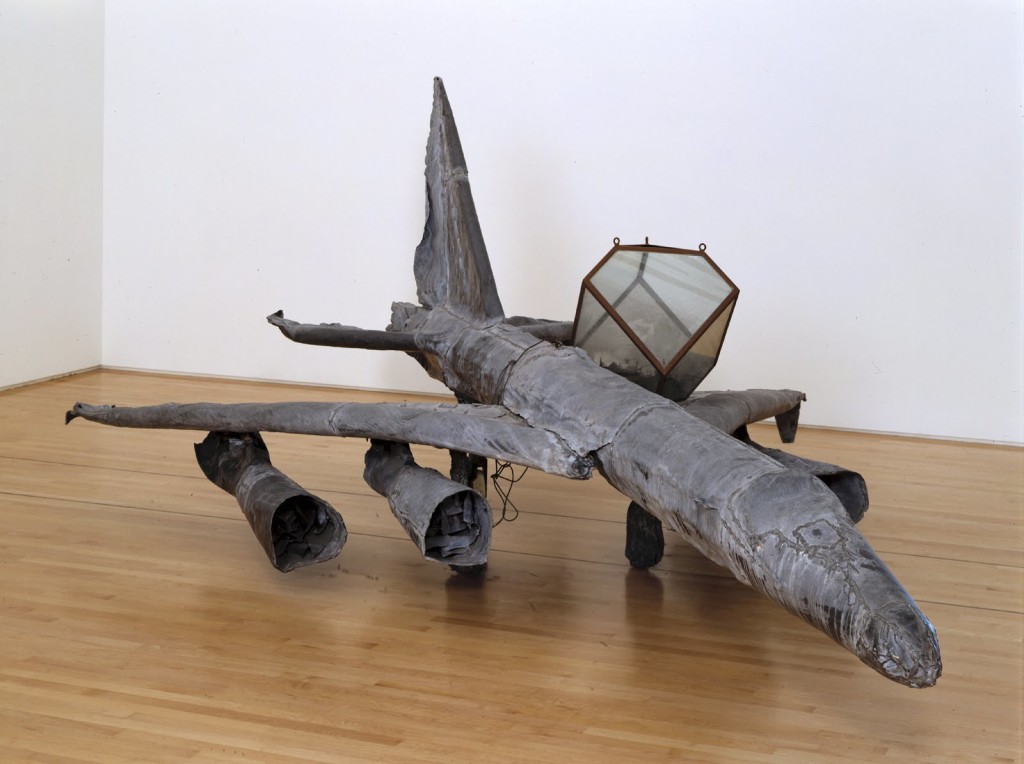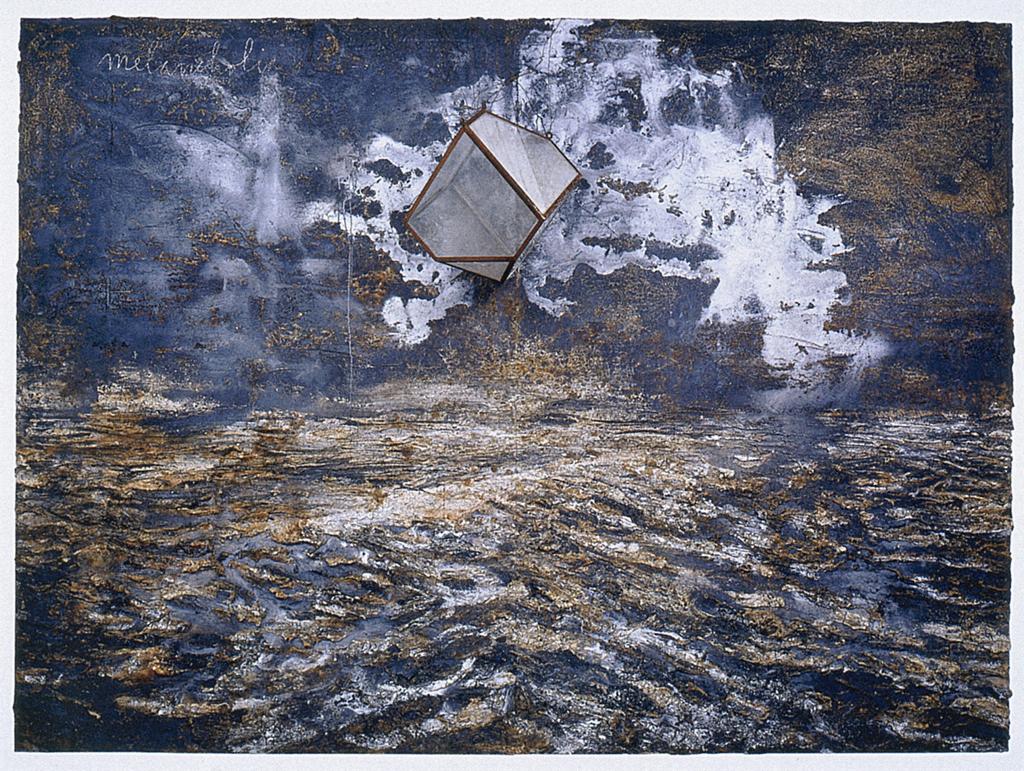Category Archives: critically ill
ink & silver, part one
One of the few true pleasures in life is the lift that comes with inspiration – that palpable leap of the insides that occurs at the very moment when an idea bubbles and pops within. It’s probably impossible to plan or to count on, but you sure can court the opportunity. Last month, I grabbed a fat book and took the long train ride from Brooklyn up to the Columbia Medical Library at 168th street, in search of just such a thing. The occasion was a lecture entitled Ink and Silver: Medicine, Photography, and the Printed Book, 1845-1880 by Dr. Stephen J. Greenberg of the National Library of Medicine. The lecture itself was small and rather dry, as it happens, covering the parallel and interlinked technological histories of photography and printing for books, much of which I already knew. I was glad to have come anyway. There were a lot of snacks, and plenty of wine, plus the unsurprising appearance of Dr. Stanley Burns of the Burns Archive (from whom I had borrowed some medical photographs for my show last year.) I think the basic idea of the evening was to show how photography changed the way medicine was depicted and sold in the 19th Century, and not just to the professionals of the time. However, there were a couple of little things mentioned that eventually clicked into place for me, and gave me new insight into my own work.
My photographs have often mimicked the look of these sorts of images – bodies shown as if on display for the camera, many bearing the signs and symptoms of (fake) diseases. I believe I just assimilated without criticism this blank and centered look, along with a range of other stylistic tics, from the artists that first inspired me: you can see it in Francis Bacon, in Joel-Peter Witkin, even a little in Meatyard and Arbus. I see it still in Saul Fletcher and Michael Borremaans, whom I follow today. These are images that pretend to be objective documents of a sort, however constructed, while containing the blunt acknowledgment of being seen and photographed. One is tempted to call this type of photograph a tableau, a term that became almost synonymous with the rise of the large constructed photographs of the 80’s, 90’s and beyond (Crewdson, Wall, et. al.)1 However, there is a distinction to be made between the images that seem to live in their own fabricated world without knowledge of the viewer (what Michael Fried calls “absorption”2) and those that demand the viewer’s participation, often as acknowledged voyeur. What to call this, exactly? “Display Aesthetics”? “Theatrical Objectivity”? And why does this tiny change in position – the inclusion versus the exclusion of the viewer – mean so much to me?
Here’s Adam Gopnik on Francis Bacon in the New Yorker (from February 26, 1990):
“A didactic white arrow is superimposed on the left-and right-hand panels, pointing almost sardonically at the dying man. (These arrows, Francis Bacon’s favorite distancing device, are sometimes explained as merely formal ways of preventing the viewer from reading the image too literally. In reality, they do just the opposite and insist that one treat the image as hyper-exemplary, as though it came from a medical textbook.) The grief in the painting is intensified by the coolness of its layout and the detachment of its gaze. It was Bacon’s insight that it is precisely such seeming detachment–the rhetoric of the documentary, the film strip, and the medical textbook–that has provided the elegiac language of the last forty years.” (emphasis mine)
What I realized from Dr. Greenberg’s lecture was that this language of presentation increases the strength of the photograph’s true power – what I like to call “Belief” (although I guess I mean “Verisimilitude”.) It is the Belief in the truth of a photograph – even when we know it is a lie or a fake – that makes it different from a drawing or painting. (Think of the difference in feeling from a photograph of a dead body versus a drawing of one.) By its assumed stance of objectivity, medical and scientific photography hews to the lie of Truth even more, thereby increasing our innate attachment to the image. In addition, our empathy with the person depicted is not erased by this stance; it is, as Gopnik points out, “intensified”. These fragile and broken bodies only increase our visceral response, allowing us, even daring us to stare.
As for me, I steal this, all of it. I want my photographs to catch you in the gut before your brain catches up. Even as I alter my images by hand and push them gently backwards in time (another trick to give them the weight of Evidence), I am grabbing every bit of Belief that I can, if only to say: Go ahead, Look.

Harlequin, 2013. Gum Bichromate with watercolor and gouache. 14″ x 11″
2Michael Fried, Absorption and Theatricality: Painting and Beholder in the Age of Diderot (Berkeley: University of California Press, 1980.)
melencolia I-XI
Most images seen on whoworeitbetter.info.
Albrecht Durer. Melencolia I, 1514.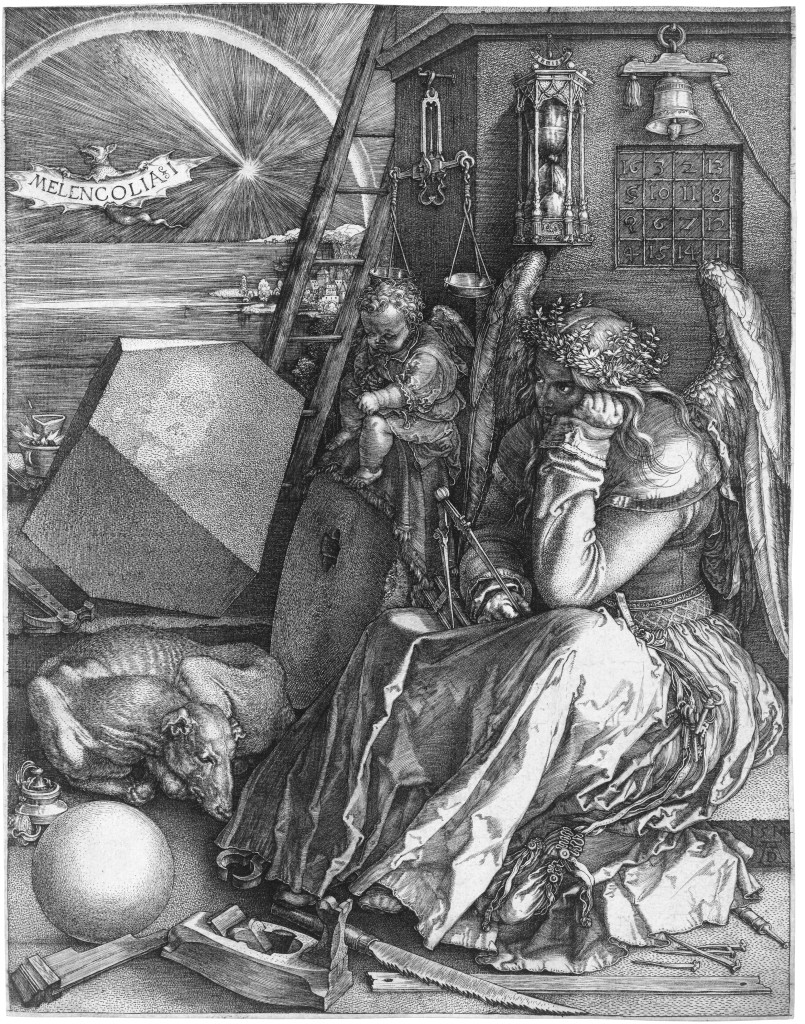
Antoine Dorotte. Amalgamma, 2010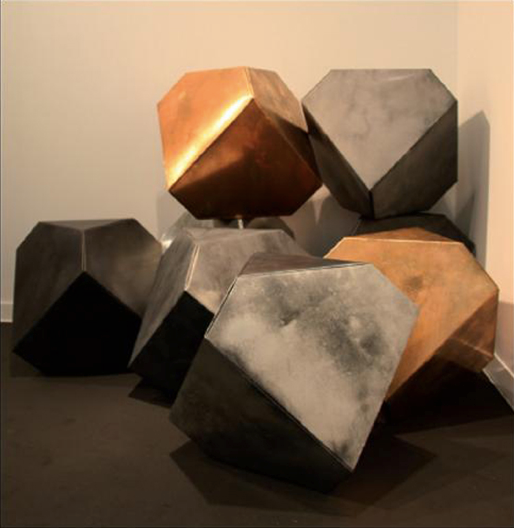
Eveline Lambrechts. Dürer’s solid, 2012.
Alexander Mueller Arc. Polyhedron, 2009.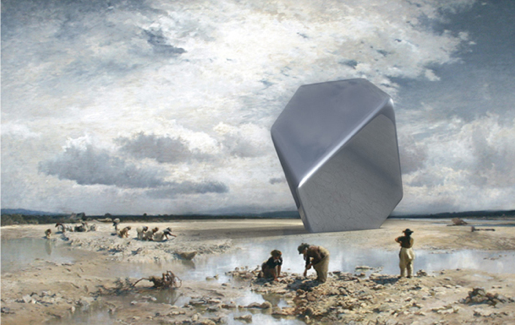
Ged Quinn. Somebody’s Coming That Hates Us, 2010.
Sarah Scampton. Durer’s Solids I-IV, 2011.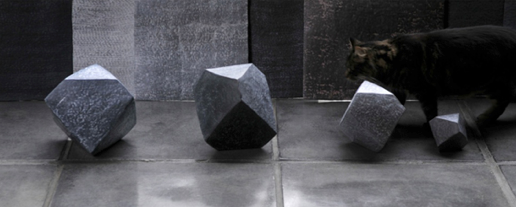
Samuel McCune. A space with room (for a lack); Durer’s solid. 2010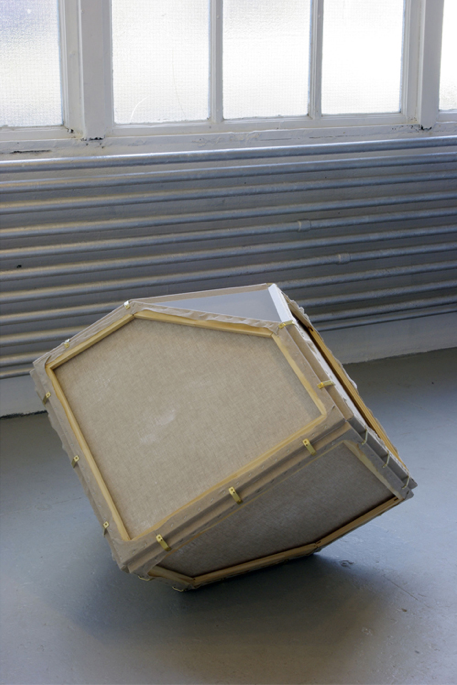
Anselm Kiefer. Women of Antiquity, 2002.
money, money, money
“One of the reasons there’s so much talk about money is that it’s so much easier to talk about than the art.”
– David Zwirner, in the recent profile in the New Yorker
this is embarrassing

Richard Phillips, First Point, 2012. Oil on canvas. 92 x 149 1/2 inches
…I mean it would be if anyone cared. Expect the usual Warhol quotes, celebrity as currency, blah blah blah. To be sure, people are welcome to waste their money on anything they like, but don’t expect me to take it seriously. Especially the “films”…
When we can’t determine what art is—when we get to that point where we’re not sure, that’s the strongest likelihood that we’re actually experiencing something great. That’s what the art world is most afraid of, because we don’t know how to assign value, whether it’s cultural or otherwise. In a way the films were meant to be a destabilizing artwork. They exist in another area, a zone where we were free to work.
—Richard Phillips
When we had the classic period of avant-garde art, which dealt with Dada and art’s negation, [the first response] was to say, ‘Hey, this isn’t art.’ And of course it isn’t, because it isn’t the art that we know and are comfortable with. It isn’t the art that is maintaining the jobs of the people that are hired by the institutions to keep their jobs.
—Richard Phillips
Trying to relate his work to the nose-tweaking games of the Dadaists is ridiculous. Duchamp’s urinal was bringing something silly and shameful into a High Art context (and it wasn’t even shown); Phillips is just bringing a mass-market subject to a different market, one that since the last century is pretty ok with mass-market subjects despite claiming to be otherwise. Making work guided primarily by popular opinion, depicting the most marketable subjects (pretty women), skillfully illustrated in oil-on-canvas is absolutely “maintaining the jobs of the people that are hired by the institutions to keep their jobs.” This work is guaranteed to sell, and selling is what maintains those jobs. “Popular” subjects – ones supported by commerce on the grand scale, like Warhol’s celebrity pictures, anything of Marilyn Monroe or the Alexander McQueen exhibition – are what keep the money and crowds rolling in. I’m sorry, Richard, but “we” have been pretty comfortable with this kind of art for at least 50 years…
By the way, the “Is it Art?” question is old and tiresome, and pretty well-answered by now, if you ask me: Art is anything the Art Establishment is willing to say it is. That’s it, and I completely agree. As long as you have it declared so within that context, Art can be anything: a pile of candies, an empty room, a sleeping woman or a can of shit. If you’re just playing with the light switches in your room, it’s not Art – but it will be if you can do it in a gallery, or get the video shown at art school, or win a prize for it. It’s that simple.
Whather it’s good or not is another question, mostly subjective. Whether I should care or not is completely up to me. But please stop telling me that oil paintings on canvas of beautiful women are somehow radical, or anything but the most pandering and least surprising Art of all.
straightforward strategies
I think it was dear ol’ Lara Meyerratken who first introduced me to Brian Eno and Peter Schmidt’s Oblique Strategies many years ago, which she would use to some effect to overcome her periodic songwriting struggles. A collection of “Over One Hundred Worthwhile Dilemmas”, the Strategies are short cryptic instructions, printed on cards to be drawn at random and used as solutions for overcoming creative blocks. I had an early web 1.0 version loaded on my Strawberry iMac, tho’ I can’t say I ever let their mysterious suggestions improve or alter my work at all. Just too stubborn I guess.
However, the more I teach, the more I find myself relying on a semi-regular set of instructions of my own, less oblique, perhaps, and a little more direct. Most of them are pretty obvious – like “Stop whining and get the fuck to work” – and one turns out to be identical to the first Oblique Strategy ever, which said “Honour thy error as a hidden intention.” Embracing your mistakes is always a good idea, and I often encourage students to put them up on the wall, or the web, or wherever someone (yourself included) might see it casually, or in passing. The lessons we can learn from failures are often best seen with new eyes, or someone else’s. Maybe it should just say
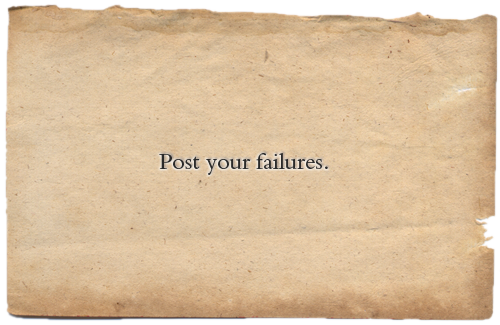
Anyway, the best and most useful one is what I’ve usually been calling “Driving into the skid,” by which I mean to go in the direction in which you’re being led. It’s really just a way of acknowledging the obvious, since it’s amazing how often we can’t see what’s right in front of us. Sometimes it’s just a matter of accepting that what you’re doing “for fun” is the real work. In other cases, it’s realizing that what seem like two different ideas or pieces are really answers to the same problem.
Last week I had two good examples of this on the same day. My former student (and friend and bartender and future tattooist) Sean Muller has been working in the back studio here since graduation, making his large-scale mixed-media photographs, covered with paint and text and scratches and cement. He’d ask me to come take a look and help him figure out what to do to escape his current block. I guess he was worried that the work was becoming stagnant, the imagery too similar, the hand-work a style. How could he push himself away from more of the same?
On the way out back, he casually remarked that the week’s heat had destroyed much of his undergraduate work, a whole pile of c-prints curled and melted and stuck together. He’d peeled apart a few of them to show me how fucked up they’d become and oh well… As we started to discuss the imagery of his large pieces – almost all of them vertically composed black-and-white pictures of churches and sacred architecture – I thought he should try something totally different just to see how his techniques would translate, what they would mean in a different format. Choosing images at random wasn’t necessarily the right solution, of course, so then what to do? I couldn’t help noticing how similar the textures of his painted pieces matched the damage on his old color work, pieces that once had meaning to him, now ruined. Et voilà! His new imagery could be… the old imagery.
Coincidentally, another former student was in town for a few days. Valentina Vella was a student from my last Concentration at Penland, who’s now in grad school in Chicago. Over an early evening martini at Brooklyn Social we spoke about her growing body of video and sound work, about Janet Cardiff and binaural recording, assignments in grad school and especially how tough it is to meet people in Chicago. New York gives us such easy access to a range of creative and interesting people, but Chicago just felt smaller and more self-selecting, I guess. Where were the interesting weirdos?
Valentina would soon have access to a good set of binaural microphones to use for recording her stories, and she was telling me the right way to use them. Janet Cardiff apparently uses a styrofoam head with microphones in it to get a more human stereo effect, although, as Valentina told me, “The best thing to record the way ears capture sound is to use actual ears. Someone else’s head.”
“Um, ok,” I said, “why don’t you just do that?” Find someone, anyone, and have them record the stories with their own ears. Post an ad on craigslist. Make it like a date – meet them at a coffeeshop first to weed out the psychos. Not only will the work sound better technically, it will benefit from the singular performance in front of an actual person. What’s more, I have no doubt there will be plenty of Interesting Weirdos…
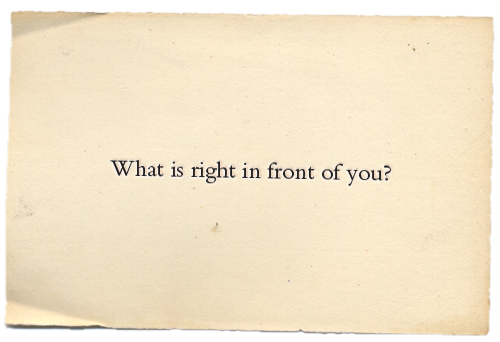
origin myths
Inventing The Photographic Artist
(an old essay on the beginning of it all)
Origin myths endure as the keys to our identity. No matter what we use to define oursleves we must simply ask, How did this begin? When did this set itself apart from not this? It is no different for art, and we may imagine an artist’s essential nature by imagining that first creative act. However, we’d be looking too far back in time, with every artist aspiring to reach the purity of the primitive moment under the weight of an immense cumulative history. And yet, while identifying the First Artist would be an almost impossible task, for Photography there is a much more recent birthdate.
The origins of Photography offer fascinating stories, and its beginnings set the tone for all Photographic Artists to come. The two men generally credited as the originators may have as much myth as fact surrounding their respective inventions, but despite the wealth of information to be found about each of them, it is perhaps the myth that is more important. These historical archetypes might have shared much in common with our contemporary selves, and it is no stretch to imagine them feeling just as we do about their burgeoning art, over 150 years ago. We can almost conjure them before us through the stories about them, even more than through their first photographs. Much of the history we carry is oral history anyway, not necessarily the original facts. Rumors and stories are the only way we remember our birth.
And what do I remember of the first photographers?
First in most histories is Daguerre, the businessman and entrepreneur, successful in being the first to officially announce his process. He was successful, too, in getting the first state patronage for his art, enough to set him up for the rest of his life. (Is the First Artist the first Financially Successful Artist?) The story goes that the mercury from a broken thermometer, accidentally left in the cupboard with his silvered plates, allowed the developing breakthrough he needed to perfect the Daguerreotype (as if the Hand of God led him to the discovery!) I imagine it only helps his lasting mythology that all his working notes were lost in a studio fire – we know little of his failures, only his perfect process, born complete.
Second perhaps is Talbot, the polymath – a man of science, leisure and wealth. He has the great distinction of having created the first photographs on paper, the first “positive” and “negative” – terms coined by his good friend Sir John Herschel, who also gave us the first use of the word “photography” in reference to Talbot’s work. With the abundance of notes and letters Talbot left behind, we have a complete narrative from a witness at the birth of the Art. We have his “first original idea” to fix the images in a camera. We have a record of his chemical trials and errors. Maybe more importantly, we also have written down his struggles and missteps, a template for the methods of a working artist.
Third and last place must be reserved for any of a group of early would-be photographers. What about Hippolyte Bayard, the romantic failure, who had developed a process similar to Talbot’s, years before 1839? He was perhaps the first Poor Starving Artist, ignored by the state and its early official history. What about poor Nicephore Niepce, Daguerre’s precursor and partner, but dead before the accepted birthdate of the art, his work like children orphaned and adopted by others? What of Elizabeth Fulhame, one of the first to write a how-to on printing photographically, in silver on white leather…? And what about all the rest (and there were many others)? They are the ancestors of the unknown and unappreciated artists, working in solitude and obscurity. Even these acknowledged first points of origin are in question, since there were who knows how many “First Photographers” in other parts of the civilized world.*
Indeed there may be no one origin for Photography, despite its having an official history. While it may be the privilege of the inventors to define the history as written, it is our privilege now to misrepresent that history for our own interests. Even the recent past becomes willfully distilled in our memory. In turn, our license to misremember the past creates for us a somewhat fluid identity, but rooted in these few known facts about our ancestors. It’s as if we had several parents each with a few distinct traits to inherit, and we may pick and choose among them. It is not an unlimited choice, perhaps, but we may be any or all of these things: Outsider or Insider, Star or Failure, Genius or Gentleman (and Gentlewoman!)
So what are we left with? What, then, is the Photographic Artist, and why is he or she different from any other artist? The distinction persists in the art world even now. Perhaps other artists are freer to separate themselves from an origin myth born so long ago, while we Photographers still take after our young parents. Unmoored from their beginnings, they may be better able to see themselves as originators and inventors – such a prized commodity for any artist today. For now, Photographers come predefined by a relatively recent history.
Our Mothers and Fathers are known by name and reputation. We may have inherited Daguerre’s business-sense or his divine inspiration; Talbot’s wonder at Nature or his methodical obstinacy; or merely Bayard’s self-importance; yet we remain defined by them. Too connected to culture, science and light, all Photographers are tethered to the world. Although we may be slaves to the machine, the mirror and the tyranny of objects, still I will imagine my own First Photographer – the First Magician, the First Narcissist, the First Fetishist ….
how to & how not to
I am trying to finish editing a small piece I wrote about Photography and Failure, distilling some of the things I’ve been talking about with all sorts of people this year. Writing just seems to get harder and harder for me, though… As I study more Art History, Photography Theory and Contemporary Philosophy, I am being overwhelmed by jargon, and getting derailed on my mission – to write about Big Ideas in plain English.
It could be worse, of course. Over the years I’ve saved some examples of the worst kind of art-jargon, usually written by gallery flacks (although it could be the artists too – so many cannot write about what they do…) But just today I ran across this gem, for a show of an artist who does drawings and paintings that are very cute and, frankly, not too heady:
With “The Passengers,” Tina Berning continues to explore the relationships between conditioned aesthetics and supposed subjective ambition in the canon of contemporary visuals. The drawings formulate the artist’s own images of the human body, its inadequacy and its fundamental relation to self-determination.
Tina Berning releases figures out of their heteronomous, medial contexts and shifts them into an interplay between voyeurism and exhibitionism. She uses her paintings and drawings as carriers to extricate subjects from the contemporary alienated incapacitation. Codes and matrices blanket faces, streaks of colour lie like shadows over the delicate silhouettes. Interventions that follow Tina Berning’s study open the plainness of schemes into the ambiguity of expression. She makes subtle corrections to the standard, uniform face and figure, enabling a look of physical expressiveness to return. Even when they appear fragile and vulnerable, the faces and images of the people take on a form that is more resistive.

Tina Berning, The Passengers II. china ink and Tipp Ex
Now here’s an example of how to do it right, written by Sally Mann for her current show at Gagosian:
I am a woman who looks. Within traditional narratives, women who look, especially women who look unflinchingly at men, have been punished. Take poor Psyche, punished for all time for daring to lift the lantern to finally see her lover.
I can think of numberless males, from Bonnard to Callahan, who have photographed their lovers and spouses, but I am having trouble finding parallel examples among my sister photographers. The act of looking appraisingly at a man, making eye contact on the street, asking to photograph him, studying his body, has always been a brazen venture for a woman, though, for a man, these acts are commonplace, even expected.
I have looked hard at my husband since the first long strides he took into the room where I was languishing on a ratty chenille couch in some student apartment. My eyes fastened on him with bright interest, squinting to better get the measure of this tall man. Within six months, we were married. That was forty years ago, and almost the first thing I did was photograph him.
But that long history of picture-taking didn’t make it any easier to make the Proud Flesh photographs. Rhetorically circumnavigate it any way you will, but exploitation lies at the root of every interaction between photographer and subject, even forty years into it. Larry and I both understand how ethically complex and potent the act of making photographs is, how freighted with issues of honesty, responsibility, power, and complicity, and how so many good images come at the expense of the sitter, in one way or another.
These new images, we both knew, would come at his.
It is a testament to Larry’s tremendous dignity and strength that he allowed me to take the pictures that I did. The gods might reasonably have slapped this particular lantern out of my raised hand, for before me lay a man as naked and vulnerable as any wretch strung across the mythical, vulture-topped rock. At our ages, we are past the prime of life, given to sinew and sag, and Lorry bears, with his trademark god-like nobility, the further affliction of a late-onset muscular dystrophy. That he was so willing is both heartbreaking and terrifying at once.
Most of the pictures I take are of the things I love, the things that fascinate and compel me, but that doesn’t mean they are easy to look at or take. Like Flaubert, two things are sacred to me in my process: impiety and perfection – the former often hereditary, the latter always hard-won. Beyond the felicitous ”unifying accidents” that occasionally grace the work, making art requires tenacity, a temperament born of an ungodly cross between a hummingbird and a bulldozer, and, most of all, practice. Practice looking.
I look all the time, at the people and places I care about, and I look with both ardor and frank, aesthetic, cold appraisal. And I look with the passions of both eye and heart, but in that ardent heart, there must also be a splinter of ice.
And so it was with fire and ice, the studio woodstove too far away from the light to do him any good on a cold winter afternoon, that Larry and I began this work of exploring what it means to grow older, to let the sunshine full voluptuously on a still-beautiful form, and to spend quiet afternoons together again. No phone, no kids, two fingers of bourbon, the smell of the ether, the two of us – still in love, still at work.
Damn…


